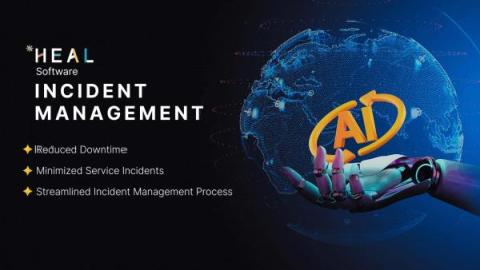Operations | Monitoring | ITSM | DevOps | Cloud
Incident Management
The latest News and Information on Incident Management, On-Call, Incident Response and related technologies.
Navigating the Transition to Secure Texting
Recently, I stumbled upon an eye-opening NPR podcast that delved into the lingering use of pagers in healthcare—a seemingly outdated technology that continues to drive communication in hospitals. As I listened through the debate around its persistence, discussing challenges and unexpected benefits, it prompted reflections on facilitating a seamless shift to secure phone-app-based texting, acknowledging the considerable advantages it brings.
How HEAL Can Help You Manage Service Incidents Better
Service incidents are unavoidable in today’s complex and dynamic IT environments. They can cause significant disruption to business operations, customer satisfaction, and revenue. However, many organizations are still struggling to manage service incidents effectively. Here, we will explore some of the common challenges faced by ITOps team and how HEAL, an AI-powered tool, can help conquer them.
What's the difference between an event vs alert vs incident in IT operations?
Are you confused by the difference between events, alerts and incidents in IT operations? It’s easy to get mixed up when you’re getting started in IT operations because of these concepts’ overlapping nature and interconnectivity. However, it’s important to know the differences so you can accurately categorize and respond to various IT issues and ensure resources are allocated effectively.
Practitioners Share How They Remove the Fear of On-Call
Being on-call isn’t likely to be the most enjoyable aspect of a job. In fact, there might be a certain level of stress and fear around engineering teams about going on call: maybe the page will be missed, or maybe a page will come in at 2am and require troubleshooting a production issue for hours.
Manage and Assign Tasks on Slack with Pagerly
Improving Beyond MTTR with PagerDuty Analytics
We’ve posted a bit about the ambiguity around MTTR before, but we want to get deeper into the confusion and maybe false sense of security our reliance on MTTR causes, from both a qualitative and quantitative standpoint.
8 Best IT Monitoring Tools and Software of 2024 (Updated)
Monitoring tools, also known as observability solutions, are designed to track the status of critical IT applications, networks, infrastructures, websites and more. The best IT monitoring tools quickly detect problems in resources and alert the right respondents to resolve critical issues. Response teams use observability solutions to gain real-time insights into resource availability, stability and performance.
Runbook vs Playbook: What's the difference?
What's the difference between Runbook and Playbook?- for once and all we'll end this confusion today. If you find yourself worrying about forgetting the detailed process of the incident your team just resolved, you're not alone. This is where documentations like Runbooks and Playbooks come into play. Runbooks and playbooks serve as the organizational guides, providing essential information and instructions for teams to navigate through tasks and processes effectively. They not only help your team help themselves but also frees up your time for your ever-growing to-do list.











